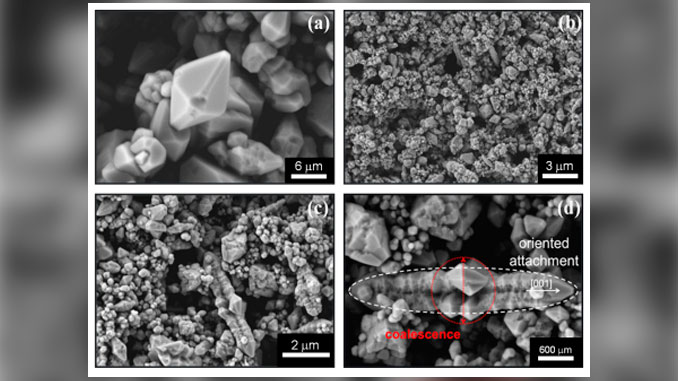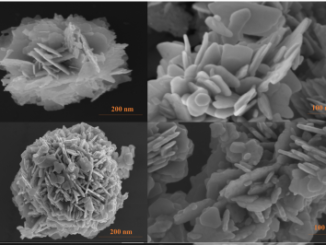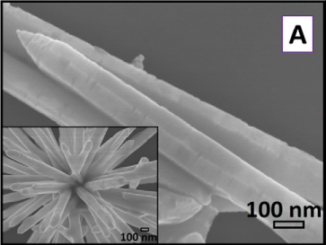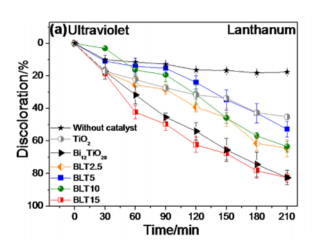
Writers: V.D. Araújo, R.L. Tranquilin, F.V. Motta, C.A. Paskocimas, M.I.B. Bernardi, L.S. Cavalcante, J. Andres, E. Longo, M.R.D. Bomio
Keywords: PbMoO4; Photocatalysis; Hydrothermal; PVA; Rhodamine; Microcrystals
Abstract: For this study, lead molybdate (PbMoO4) microcrystals were prepared by the co-precipitation method and processed using a conventional hydrothermal method at 100 °C for 10 min with polyvinyl alcohol (PVA) as the capping agent. These microcrystals were structurally characterized by X-ray diffraction (XRD) and micro-Raman spectroscopy, and their morphology was investigated by field-emission gun scanning electron microscopy (FEG-SEM). The optical properties were analyzed by ultraviolet–visible (UV–vis) absorption spectroscopy and photoluminescence (PL) measurements. XRD patterns and MR spectrum indicate that the PbMoO4 microcrystals have a scheelite-type tetragonal structure. FE-SEM images reveal that the PVA promotes the aggregation of several octahedrons and the formation of large porous stake-like PbMoO4microcrystals which are related to the oriented attachment growth process. Moreover, the effect of the capping agent hinders the growth of a large amount of micro-octahedrons which can be verified with by several nanocrystals on large crystals. Intense green PL emission was observed at room temperature for PbMoO4 microcrystals which are related to structural defects at medium range and intermediary energy levels between the valence band (VB) and the conduction band (CB). Photocatalytic activity was observed for PbMoO4 as a catalyst in the degradation of the rhodamine B (RhB) dye, achieving total degradation after 90 min under UV-light.




